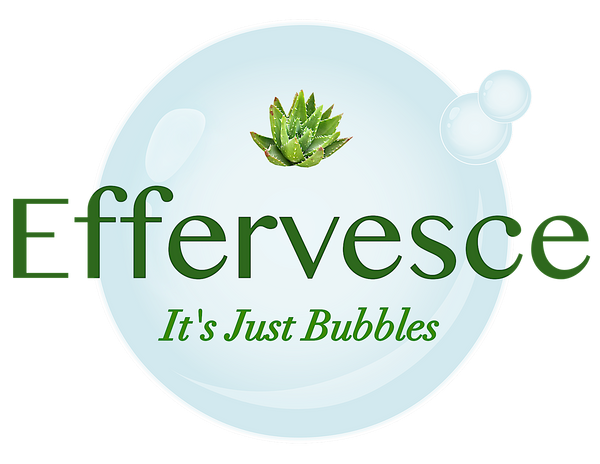by Jasmine Kurys aka Mycelium Bubbles
Adaptogens have become a very popular and trendy word in the media. We hear about them helping a wide range of issues from memory problems, to sleep aid and simultaneously energy levels, inflammation reduction, skin issues, and hormone balancing helping a variety of issues like thyroid problems, depression, PTSD, and anxiety.
So what exactly is an adaptogen, and how can it help with all of these different things at once?
While it might seem dry skin and memory loss have nothing to do with each other, our body is a complex, integrated machine with wires so deeply connected that they have everything to do with each other. Notably when there is a common enemy like stress. Stress might seem to be a concept incapable of harm on a deep physical level but it sparks a chemical and hormonal response in our bodies that can have serious outcomes. When we are stressed we release cortisol, a steroid hormone that is responsible for regulating our flight or fight response and our metabolism (the way we store fats, carbohydrates and amino acids). Cortisol production increases glucose (sugar) into our bloodstream because sugar is our brain's favorite energy source and in times of stress we need more brain power to solve the issue at hand. When we are stressed our body also produces hormones called catecholamines that break down cellular structures from increased oxidant molecules (oxidative stress, the antithesis of antioxidants). This cellular breakdown is the first step in most health problems from aging skin to cancerous tumors and why antioxidants is another famous buzz word in the health world.
It’s important to note stress does not only mean mental anguish. We put stress on the body by doing physical labor, pushing past exhaustion, not allowing injuries time to heal, smoking or inhaling toxic fumes from work or a polluted city, chronic dehydration, unhealthy eating habits, getting hurt or sick, even exercise. Most stressors affect our sympathetic nervous system (or stress response system) responsible for flight or fight and causing increased breathing, heart rate/blood pressure, redirection of blood flow to important organs like the brain, and adrenaline release. Whereas the parasympathetic nervous system is responsible for restoring our bodies to a serene state.
Adaptogens are plants that increase our bodies' resilience to stress, helping adapt to and even resist it. It might seem too easy a definition but it is as simple as that. Their ability to help balance hormones rather than sedate us, affects mood disorders, sleep AND energy levels. It causes stress reduction to nerves that have a trickle down effect from lessening muscle pain to aiding major organ functions including the shield that protects us from the outside world, aka our largest organ, the skin.
One of the most popular examples of an adaptogen is ashwagandha or “Indians Ginseng,” from the Ayurveda medicine system in India. “Ashwa” translates to “smells like horse” which has been adopted to mean “strength of a horse” because it improves nerve strength and vigor. Ashwagandha nourishes, soothes and strengthens our nerves/nervous system making it a neuroprotective, helping with adrenal glands, thyroid and immune function, and inflammation build up.
Regarding ashwagandha as a topical skin care product,
Ashwagandha is an adaptogen known for supporting hormone balance and increased longevity, promoting youthful physical and mental health. In the culinary world you might see it paired with other famous adaptogens like maca root or the mushrooms Lion's Mane and Reishi. In our new line “Serene” you will see it paired with the biblical herbs Frankincense and Myrrh, gifted to baby Jesus from the Wise men and seen in altars/churches around the world today. Frankincense and Myrrh are resins (dried tree sap) from the botanical family Burseruceae or “the incense tree family.” They combine for fast acting pain relief and are known for their anti-inflammatory properties, increasing circulation, preventing infection, boosting collagen and healing wounds. Frankincense is considered an adaptogen while myrrh is considered a powerful anti-inflammatory but not an adaptogen itself. Adaptogens might seem new to society but these herbs, roots, saps, mushrooms have been used as long as history has been recorded and if you follow the trend of history closely, you'll see how sacred they have been from ancient medicine to modern science.
This article was written by Jasmine Kurys @cooking_uprooted
|
Serenity Set - Pain Relief Trio |
|
|
References
- “A Study of Efficacy and Safety of Ashwagandha (Withania Somnifera) Lotion on Facial Skin in Photoaged Healthy Adults - PMC.” PubMed Central (PMC), National Library of Medicine, https://www.ncbi.nlm.nih.gov/pmc/articles/PMC10017910/. Accessed 14 July 2023.
- “An Overview on Ashwagandha: A Rasayana (Rejuvenator) of Ayurveda - PMC.” PubMed Central (PMC), National Library of Medicine, 12 July 2023, https://www.ncbi.nlm.nih.gov/pmc/articles/PMC3252722/.
- “Ashwagandha | Memorial Sloan Kettering Cancer Center.” Memorial Sloan Kettering Cancer Center, 14 July 2023, https://www.mskcc.org/cancer-care/integrative-medicine/herbs/ashwagandha.
- Castleman, Michael. The Healing Herbs. 1st ed., Rodale Press, 1995, pp. 268–70.
- “Chronic Stress and Oxidative Stress as Common Factors of the Pathogenesis of Depression and Alzheimer’s Disease: The Role of Antioxidants in Prevention and Treatment - PMC.” PubMed Central (PMC), National Library of Medicine, https://www.ncbi.nlm.nih.gov/pmc/articles/PMC8470444/#:~:text=Nearly%20all%20stressors%20have%20the,of%20inflammation%20and%20oxidative%20stress. Accessed 10 July 2023.
- Collings, Trudy. “The Sacred Plant | The Benefits of Ashwagandha | PAAVANI Ayurv – Paavani Ayurveda.” Paavani Ayurveda, Paavani Ayurveda, 20 Dec. 2019, https://paavaniayurveda.com/blogs/the-ayurvedic-lifestyle/health-beauty-benefits-ashwagandha.
- Groves, Maria Noel. Body into Balance. 1st ed., Storey Publishing, 2016.
- “Seeing the Unseen of the Combination of Two Natural Resins, Frankincense and Myrrh: Changes in Chemical Constituents and Pharmacological Activities - PMC.” PubMed Central (PMC), National Library of Medicine, https://www.ncbi.nlm.nih.gov/pmc/articles/PMC6749531/ . Accessed 14 July 2023.
- Silva, Lauren. “7 Science-Backed Benefits Of Ashwagandha – Forbes Health.” Forbes Health, Forbes, 6 July 2023, https://www.forbes.com/health/body/ashwagandha-benefits/.
- “The Origin of Frankincense and Myrrh Add to Their Special Meaning | Illinois Extension | UIUC.” Illinois Extension, https://extension.illinois.edu/blogs/ilriverhort/2021-12-21-origin-frankincense-and-myrrh-add-their-special-meaning. Accessed 14 July 2023.



